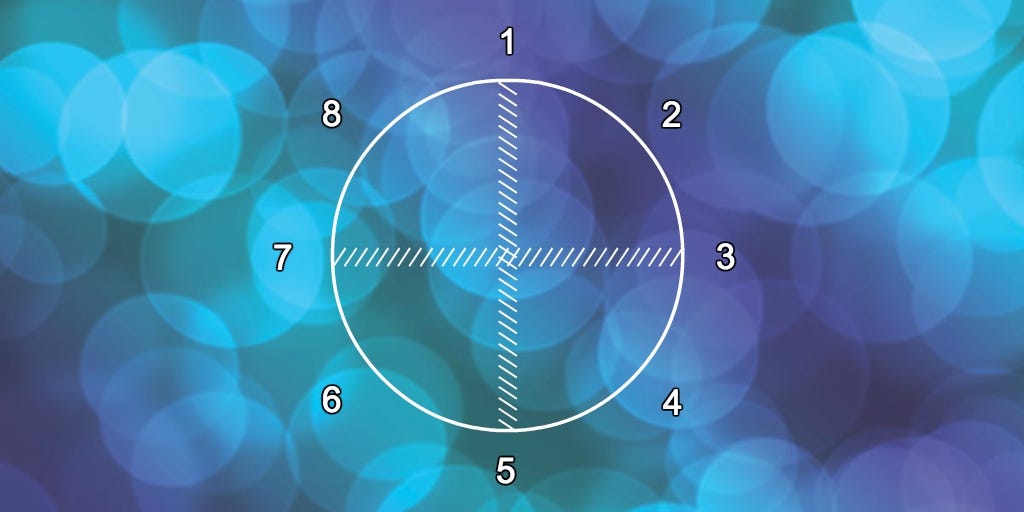Dan Harmon's Circular Structure, Part Two
Life. Death. Order. Chaos. The circles keep circling, down and down and down.
This post is part of the Outline With Me series. For more like this, check out the outlining your novel page.
In part one, we examined each of the eight steps of circular structure. As a refresher, those eight steps are:
Our main character is in her comfort zone,
but there’s something she wants.
She enters an unfamiliar world or situation,
adapts to it,
and gets what she wanted.
But! She pays heavily for achieving this
before returning to a familiar world or situation
as a changed person.
All of which fits nicely onto—you guessed it—a circle, wherein our main character both starts and ends in a zone of comfort. For a visual representation, check out the below.
One of the things I like most about this representation is that it shows us additional theoretical angles from which we are empowered to explore our stories as a whole. Let's examine each of these below with the goal using this knowledge to better frame higher-level concepts like theme.
Life versus Death
This image alone might already set your gears to grinding. If it does, fantastic. If not, let's see if we can wind them up before unleashing on the page.
Remember the numbered circle above, with each number corresponding to a step in this circular structure? Imagine those numbers are placed around our Life-Death circle above. What two critical points are located along the equator dividing our character's world into hemispheres of life and death? That's right: numbers three and seven—those "crossing the threshold" moments from the familiar to the unfamiliar and back again.
Why is this of note? Because these are the moments in our story at which our character enters a world in which she must confront death (three) before she can emerge on the other side with hope of life once again (seven).
In some stories, these notions of life or death can be quite literal. If our main characters aren't facing their own mortality, however, perhaps their ideals are. Perhaps they're confronting the death of their innocence, a dream, or hope.
Contrast this with emergence on the far side of the story in step seven—the transition back into life. Here is where our character finally "sees the light" or "comes back to their deity of choice" or holds out some hope for a better self or an improved world as a result of the knowledge she's earned.
The critical point here is that this life-death balance be kept in mind as we write so that it manifests itself on the page. At any point in time during our character's journey around the circle, if a reader were to examine our character's primary struggle, he should be able to note that she's either:
Experiencing a disturbance to life as she knew it (steps one and two)
Confronting death (itself or of an ideal or identity in steps three through six), or
Adjusting to a new world and/or perspective (steps seven, eight, and ultimately back to one)
I've found using this as a tool to be effective both when crafting a plot and examining one after it's been put to the page—if I don't quite see how my main character's journey aligns with this set-up, I try to pinpoint where her journey has perhaps strayed in focus to either change the plot's focus point or otherwise adjust course accordingly.
The above may seem like a useful coincidence as the result of the equivalent of a literary-theory parlor trick... but wait! There's more! This show's just getting started, and circular structure never tires of being a (circular) star.
Keep reading with a 7-day free trial
Subscribe to R: On Everything to keep reading this post and get 7 days of free access to the full post archives.







